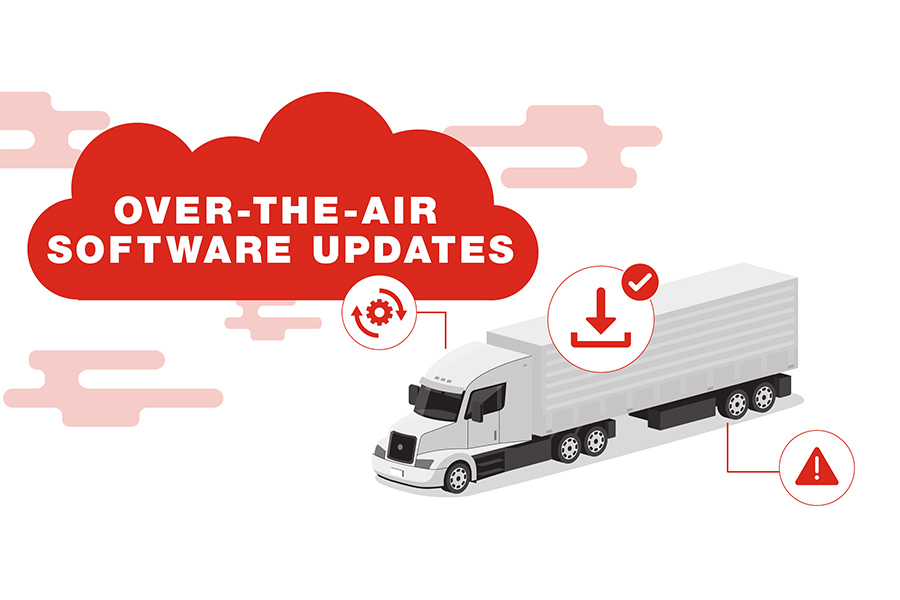Three digital technologies that will shape the future of commercial vehicles
By Cummins Inc., Global Power Technology Leader

Digital technologies are transforming the world. In our personal lives we are growing used to interacting with connected devices every day in our homes, cars, and at work. Today, many new cars come with digital features that improve safety, increase efficiency, and bring new levels of convenience to our everyday lives.
Commercial vehicles are no different, with digital fleet management technologies now at the forefront of how organizations are mitigating the impacts of rising costs, driver shortages, and climate change. With rapid advancements in telematics, onboard computing capabilities, and interoperable software platforms, it can be difficult to sift through the hype and stay abreast of the latest and greatest innovations in the truck and bus markets. Here are three digital technologies that will help shape the future of commercial vehicles:
Advanced Computing Devices
Like vehicles, engines technology continues to advance as well. Engines contain many different sensors that collect information about how each part of the engine is performing. This data is what powers your engine's digital capabilities, including features like remote monitoring and diagnostics.
For data to power digital capabilities and deliver insights, it needs to be processed. This is done by sending the raw data back to the manufacturer, where it is analyzed and used to produce valuable insights and solutions for the customer.
However, with the amount of data being ever-increasing, sending it in raw form is becoming more and more challenging. This is where advanced computing hardware comes in.
Today, engine manufacturers place the computing power directly on the engine or in the vehicle. High-performance computing devices are installed to process and analyze the data before it is sent back to the manufacturer to provide insights to customers.
These “first-fit” devices, like Cummins’ Acumen®, give customers access to a full suite of digital solutions from the moment they purchase a vehicle without having to add any aftermarket devices or subscriptions.
Learn more about Acumen here.
Software Containerization
If computing hardware is the raw power behind digital technology, then software is the brains of the operation. Software is becoming increasingly important in commercial vehicles.
As important as software is for vehicles, it can be incredibly complicated to develop and install. Traditionally, software was coded and developed for a specific environment or type of hardware. This means different software must be created for each manufacturer, each type of vehicle, and even each type of engine. This process can be difficult to scale and incredibly time-consuming and costly, leading to developers in the commercial vehicle industry spending most of their time rewriting existing software for different environments, instead of developing new software.
The solution is a technology called containerization. According to IBM, “containerization is the packaging of software code with just the operating system libraries and dependencies that are required to run the code to create a single lightweight executable – called a container – that runs consistently on any infrastructure.”
Simply put, this means creating software using a common framework that allows it to be written once and then deployed to different telematics hardware. This helps companies to develop and deploy software faster and more securely, leading to digital capabilities reaching customers faster and more consistently.
Cummins is working closely with Microsoft, and over 40 industry partners, to create a shared framework for commercial vehicle software called the Open Telematics Framework. By working to create a shared framework for the industry, Cummins is making it easier for containerized software to be developed and deployed for commercial vehicles. This means new technologies can reach customers faster than ever before.
Learn more about the Open Telematics Framework here.
Over-the-Air Software Update Technology
With software defining today’s commercial vehicles and those of the future, ensuring that software stays up to date is becoming increasingly important. Running the latest software in your vehicle ensures that you have the latest updates for performance, efficiency and security.
Traditionally, to update a vehicle’s engine software, you had to take it to a service location to update software on the engine control module (ECM). This process often could cost an entire day of downtime, or more for a vehicle.
That downtime is now a thing of the past. Many Cummins medium and heavy-duty engines can now complete software updates remotely using over-the-air programming, enabled by Acumen® or an OEM provided telematics device.
These updates can be completed no matter where the vehicle is located and take less than five minutes of stationary downtime, allowing you to ensure that all your Cummins-powered vehicles have the latest software without a trip to a service location.
Find out if your vehicle is eligible for over-the-air software updates here.

Author Profiles

Cummins Inc., Global Power Technology Leader
Cummins Inc., a global power leader, is committed to powering a more prosperous world. Since 1919, we have delivered innovative solutions that move people, goods and economies forward. Our five business segments—Engine, Components, Distribution, Power Systems and Accelera™ by Cummins—offer a broad portfolio, including advanced diesel, alternative fuel, electric and hybrid powertrains; integrated power generation systems; critical components such as aftertreatment, turbochargers, fuel systems, controls, transmissions, axles and brakes; and zero-emissions technologies like battery and electric powertrain systems and electrolyzers. With a global footprint, deep technical expertise and an extensive service network, we deliver dependable, cutting-edge solutions tailored to our customers’ needs, supporting them through the energy transition with our Destination Zero strategy. We create value for customers, investors and employees and strengthen communities through our corporate responsibility global priorities: education, equity and environment. Headquartered in Columbus, Indiana, Cummins employs approximately 70,000 people worldwide and earned $3.9 billion on $34.1 billion in sales in 2024.
Related Topics
Related Tags